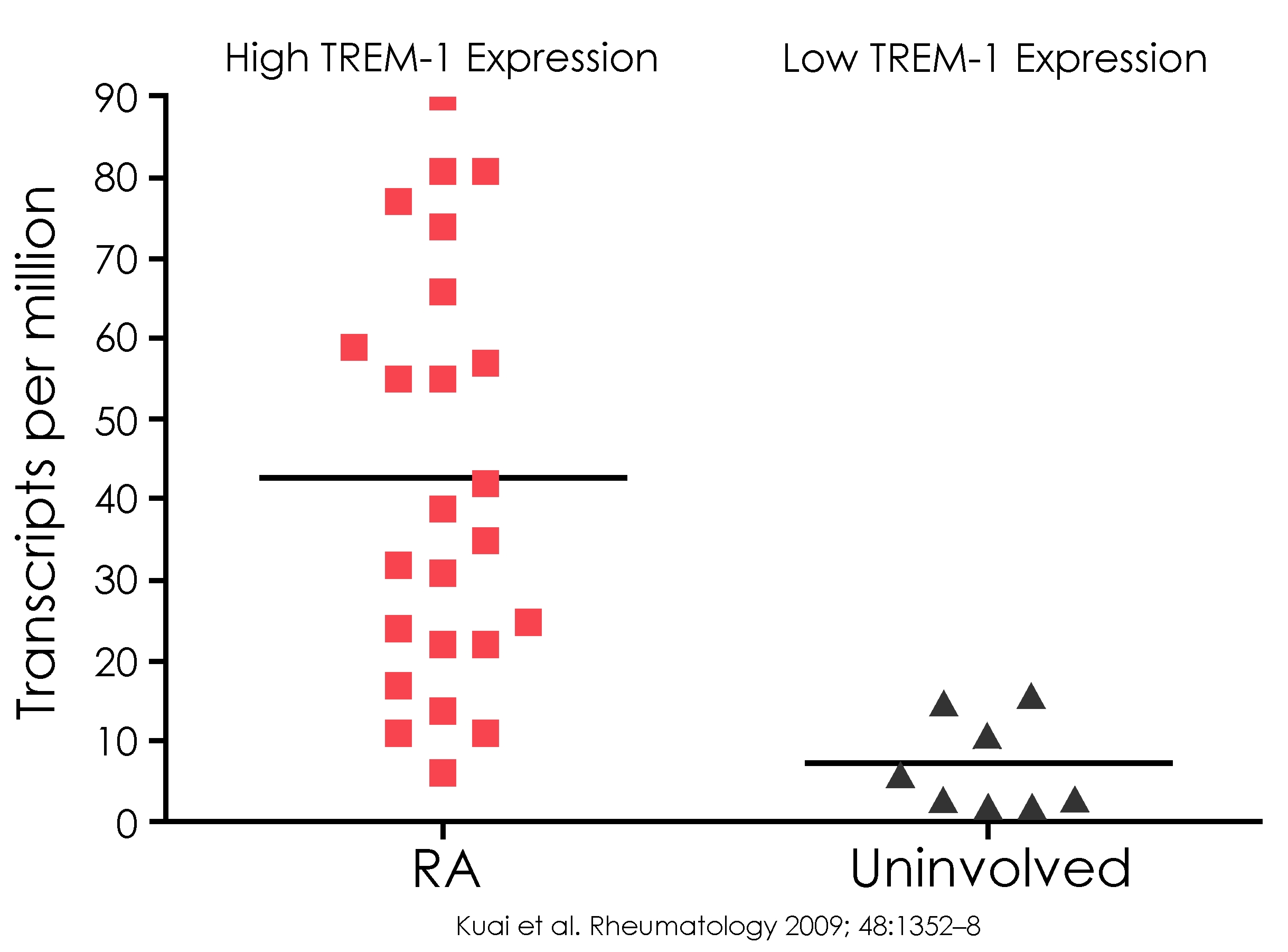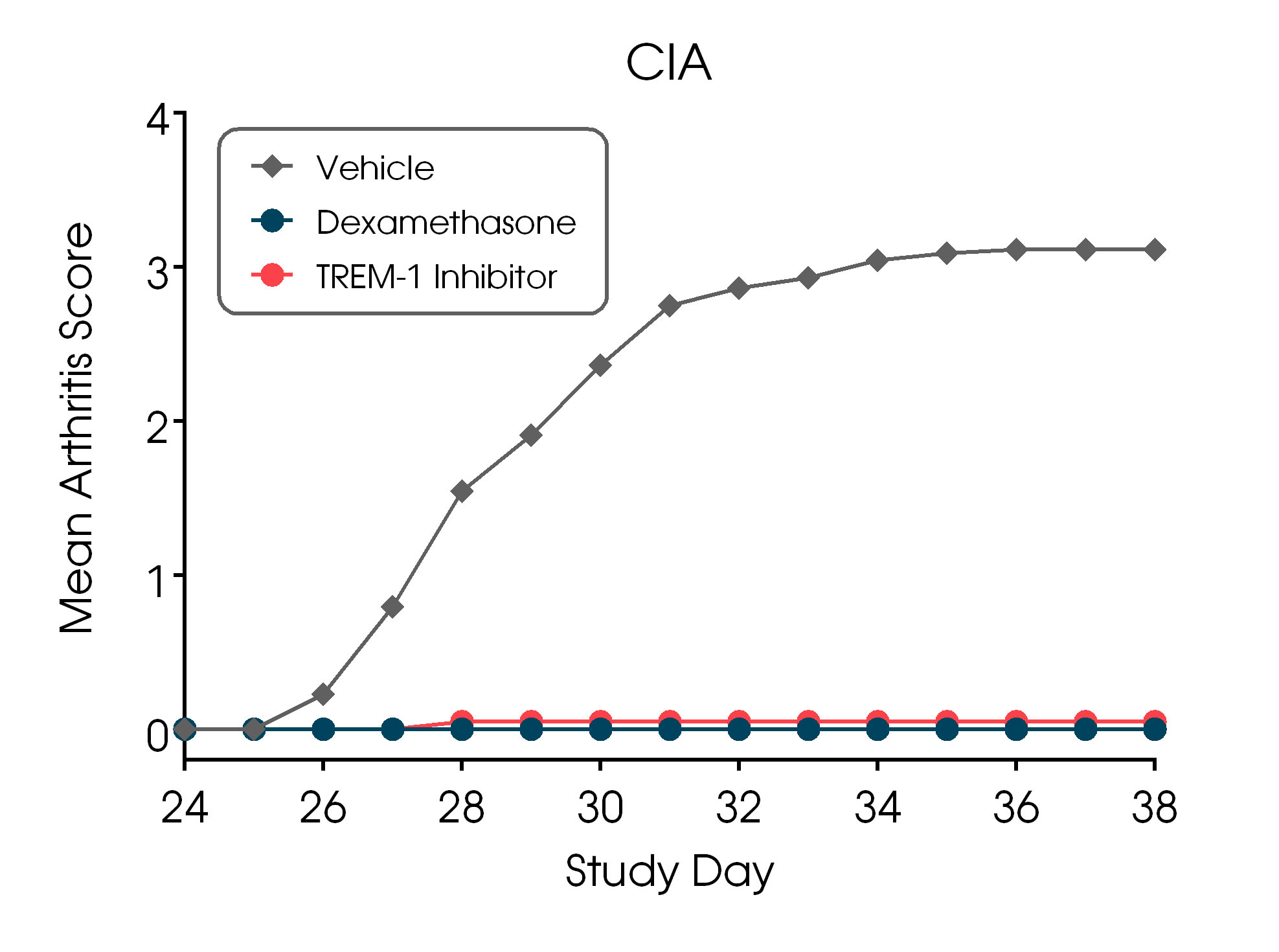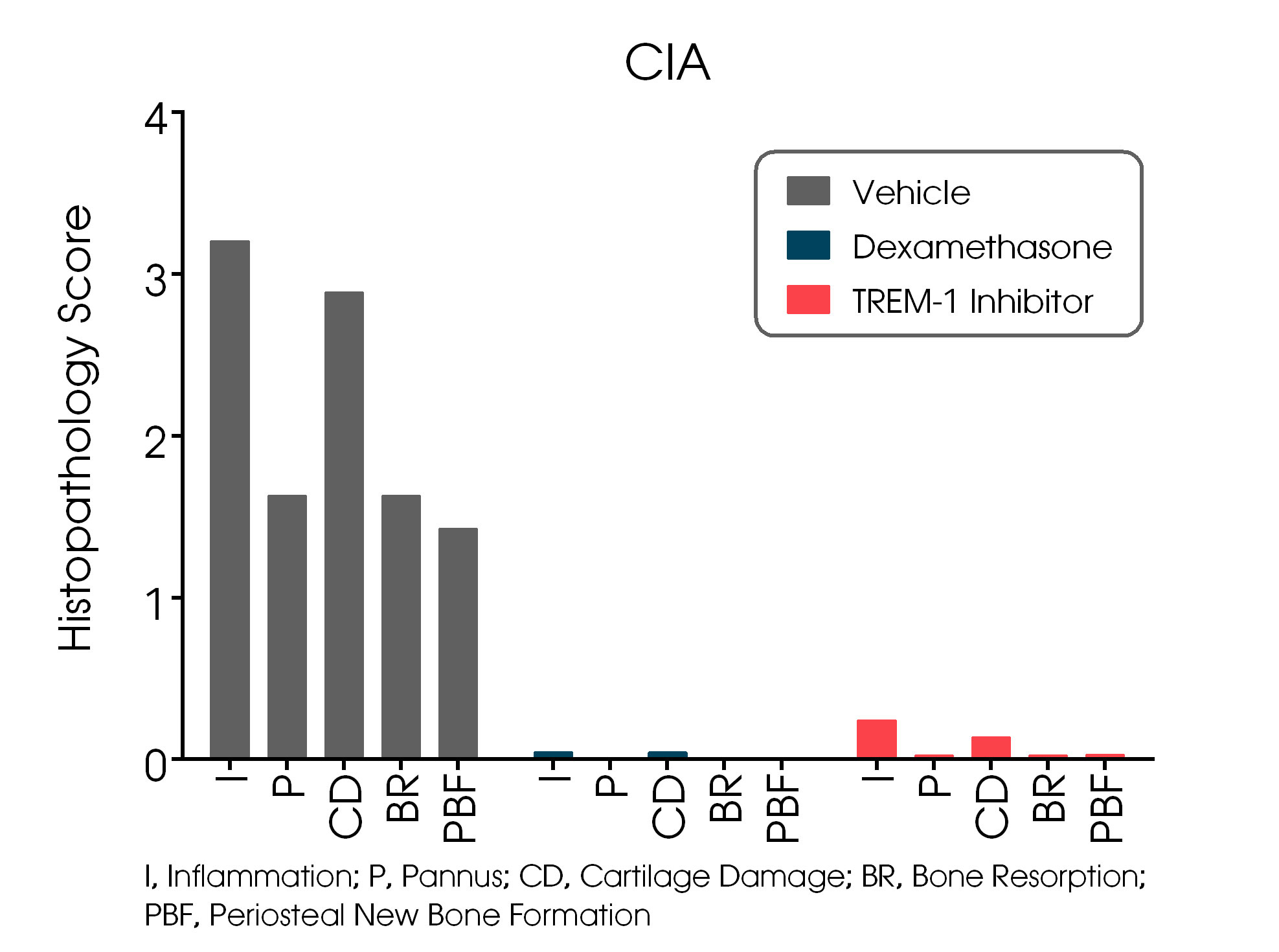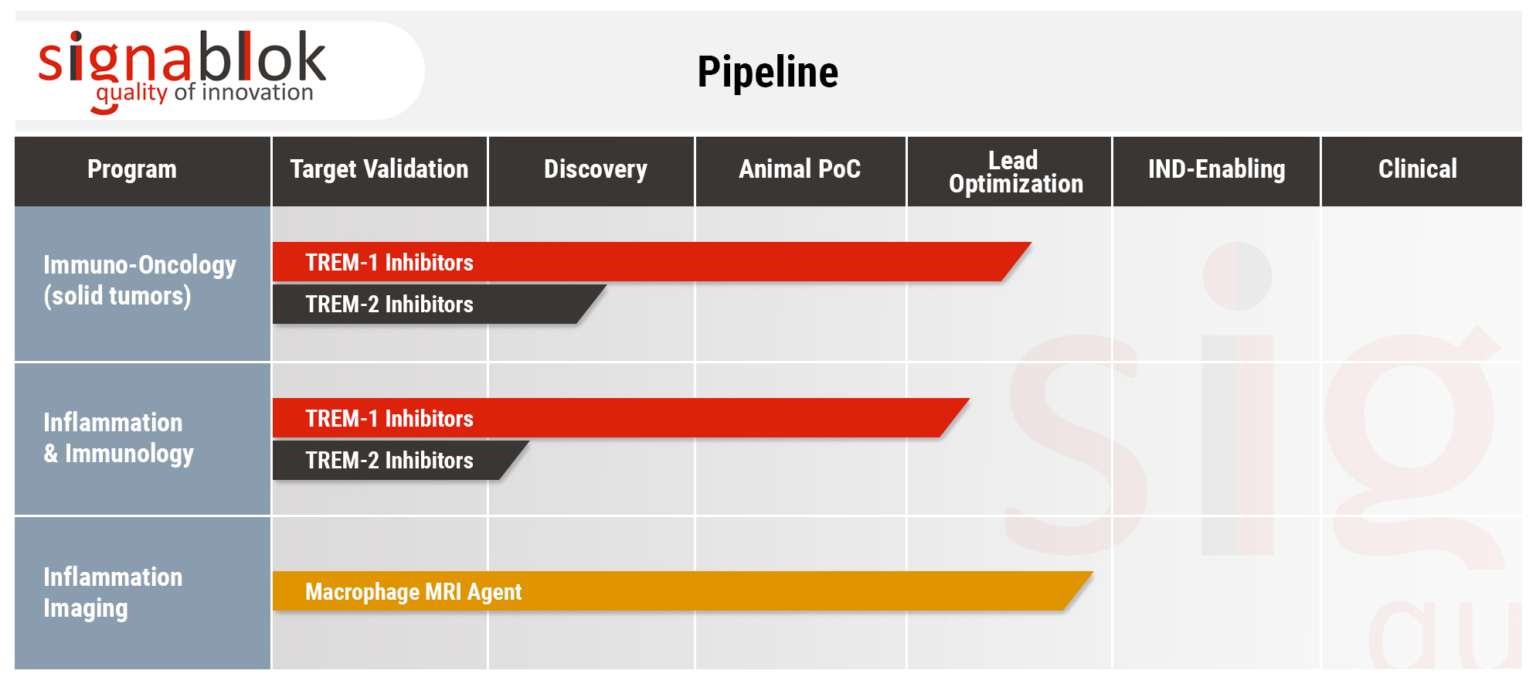Autoimmune diseases are a family of chronic systemic inflammatory disorders when the immune system attacks and damages the body's own tissues. As an inflammation amplifier, TREM-1 plays a pivotal role in autoimmune diseases. For example, TREM-1 expression in the inflamed synovium of patients with rheumatoid arthritis is significantly higher as compared to that in healthy individuals.
Rheumatoid Arthritis (RA)
RA is the most common autoimmune disease that causes chronic inflammation and damage of the joints in 35-70 million patients worldwide yearly and mainly affects individuals between 30-55 years of age. Despite advances in therapy, RA has no cure. 30-40% of RA patients do not respond to the first-line treatment of RA – methotrexate (MTX). Toxic side effects of MTX and other current treatments further highlight the need for new therapies.
As a checkpoint between protective and detrimental inflammation, TREM-1 contributes to RA. TREM-1 expression is significantly increased in both invasive and encapsulated RA synovium.
SignaBlok's non-toxic and well-tolerable ligand-independent TREM-1 inhibitor demonstrates high single agent efficacy in a preclinical model of RA: it reduces release of serum proinflammatory cytokines (TNFa, IL-1b, IL-6, CSF-1) up to 5-fold, prevents and treats synovial inflammation and joint damage.
Scleroderma and Other Autoimmune Disorders
Scleroderma that includes localized scleroderma and systemic sclerosis is a rare but devastating autoimmune disorder. Current therapies all have side effects, are limited and associate with 10 year survival of 55%, showing the need for novel approaches.
Further expanding on its TREM-1/TREM-2 SCHOOL technology platform, SignaBlok has launched a program focusing on a new therapeutic modality targeting scleroderma.
Considering growing line of evidence of TREM-1/TREM-2 involvement in the pathogenesis of other autoimmune disorders such as systemic lupus erythematosus, inflammatory bowel disease, Guillain‑Barré syndrome, multiple sclerosis, Still's disease and many others, SignaBlok’s therapy can be of clinical interest in the care and management of these disorders.




